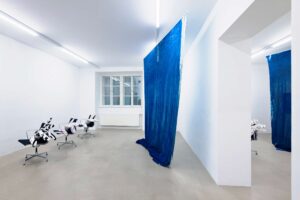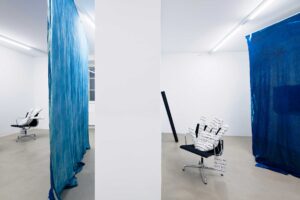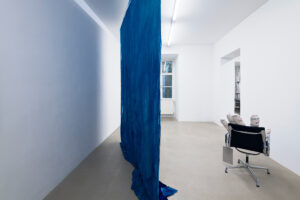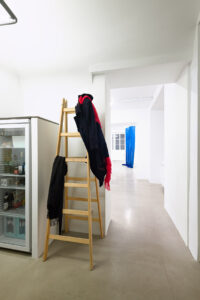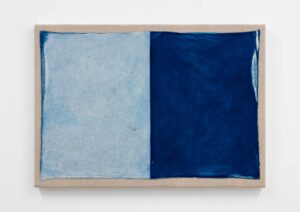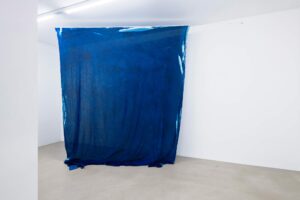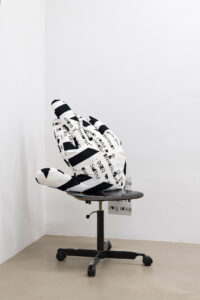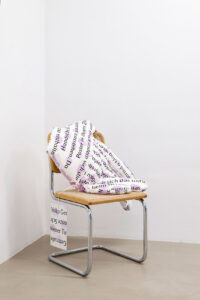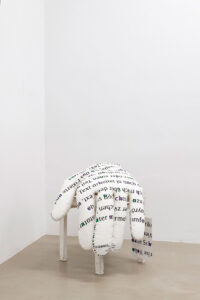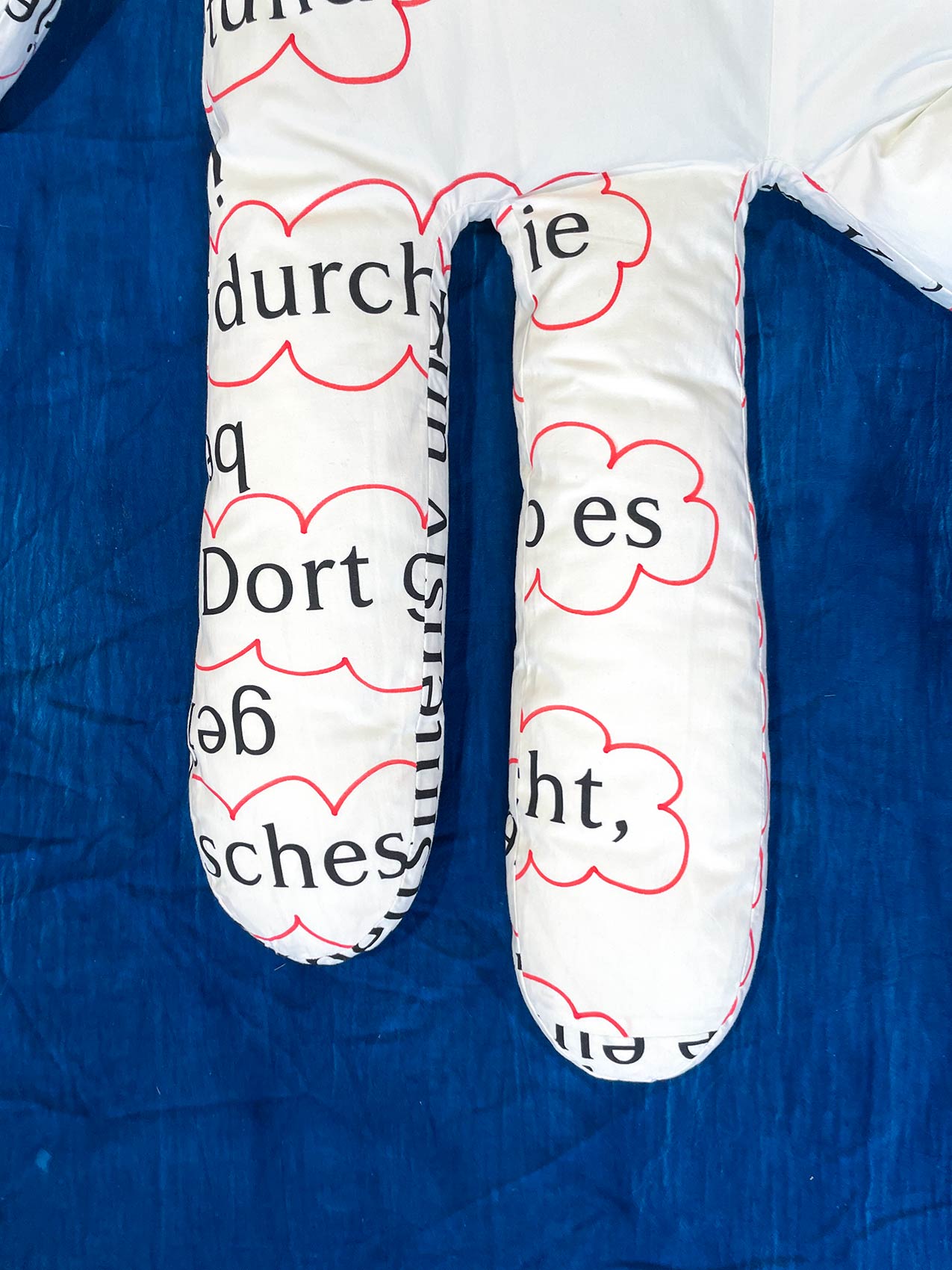
Constanze Schweiger works in the fields of visual arts, literature, graphic design and publishing. Her practices enable and inform each other, and the results of her production relate to each other on a material, content-related, formal, conceptual and economic level. In her works, the artist uses textiles and textile processes to produce sculptures that address the relationship between time and composition as well as time and individual perspective. A central point of reference is an understanding of the human subject as part of a dynamic network of relationships with the natural and social environment, in space and time.
For her exhibition Finished and begun in the next one, the artist has invited the duo WIENER TIMES (Susanne Schneider and Johannes Schweiger) to present the series Doodle Hands, 2023, created in collaboration with Constanze Schweiger. WIENER TIMES are known for their stylistically eclectic everyday objects at the intersection of design, craftsmanship, art and decoration. A strong focus is placed on the textiles used and the handcrafted detail.
The textile material for both the Doodle Hands works and the work Eisenblaufärbung for Ballgasse 6, 2023, a cyanotype-dyed blue fabric hanging from a rope stretched across the gallery space, originates from a past exhibition by Constanze Schweiger at the New Jörg exhibition space in Vienna. The reuse of material from works presented as finished works in 2017 corresponds to Schweiger’s understanding of her practice as the ongoing writing of a story whose material is constantly fed by all her various activities and subjective experiences.
In 2017, a fabric dyed yellow with turmeric hung from the ceiling of New Jörg. Over the duration of the exhibition, it changed color due to the exposure to sunlight. Six years later, visitors to the gallery now encounter lengths of fabric dyed iron blue. As part of a residency at the Kulturverein Salettl, part of the Kleine Stadt Farm association in Vienna’s Lobau, Constanze Schweiger moved into a studio near the water last summer, surrounded by nature and numerous civil society initiatives. She took the curcuma yellow textile there and designated the content of the previous exhibition as the material for the upcoming one.
The proximity to the river and the adjacent grasslands made it possible to bleach the fabric in preparation for a new dyeing process: Schweiger used a centuries-old method to spread the cotton on the grass, soaking it in the river water once a day. The peroxides formed under the influence of light and oxygen, together with substances produced during the photosynthesis of the grass, caused the gradual fading of the yellow color. Following a traditional recipe for cyanotype, she dipped the now bleached fabric into a solution of iron salts, which together react sensitively to light. The subsequent exposure resulted in a dye called iron blue, Prussian blue or Berlin blue, depending on the emphasis of the chemical structure or the historical background.
Another defining component of the 2017 exhibition, alongside the turmeric yellow one, was a second textile panel that also hung from the ceiling. The 12-meter-long panel made of white cotton poplin was printed with texts that Constanze Schweiger had written for her scrollwork blog constanzeschweiger. blogspot.com from 2016 to 2017: writings about her own impressions while reading six publications on the topics of reading, writing and publishing. Referring to Gertrude Stein’s Narration. Four Lectures, Schweiger writes, for example:
“I like the feeling of words doing as they want to do.…” Like little noises when fingers brush over pages.
Schweiger translates the emphasis on the materiality of text, as is typical of Gertrude Stein, into an image of haptic experience. In general, the creation of moments of translation between media and materials, their mixing and reaction to one another, is constitutive of Constanze Schweiger’s artistic activity. In the installation at New Jörg, the texts could still be read together. Now they figure on the Doodle Hands as fragments, supplemented by ornamental markings, which Schweiger understands as an act of appropriation in a chain of appropriations. The title of the exhibition Finished and begun in the next one emphasizes these central principles in Schweiger’s work. One could also view this type of ongoing production of objects and texts that are materially and conceptually connected to one another as an ongoing experiment. As the philosopher Christoph Menke emphasizes, the experiment is a way of acting in the world: “The experimenter produces something and exposes himself to an event. The experiment shows: You have to do something in order to recognize something.”1 In this way, all of the processes that can be seen in Constanze Schweiger’s artworks repeatedly serve to produce objects that are imbued with an “experience of worldliness” (Arendt) – of time, material and the natural and social environment.
1 Christoph Menke, Die Kraft der Kunst, Berlin: Suhrkamp 2013, p. 83. See also: Hannah Arendt, The Human Condition, second edition, Chicago and London: The University of Chicago Press 2018, pp. 323–324.
